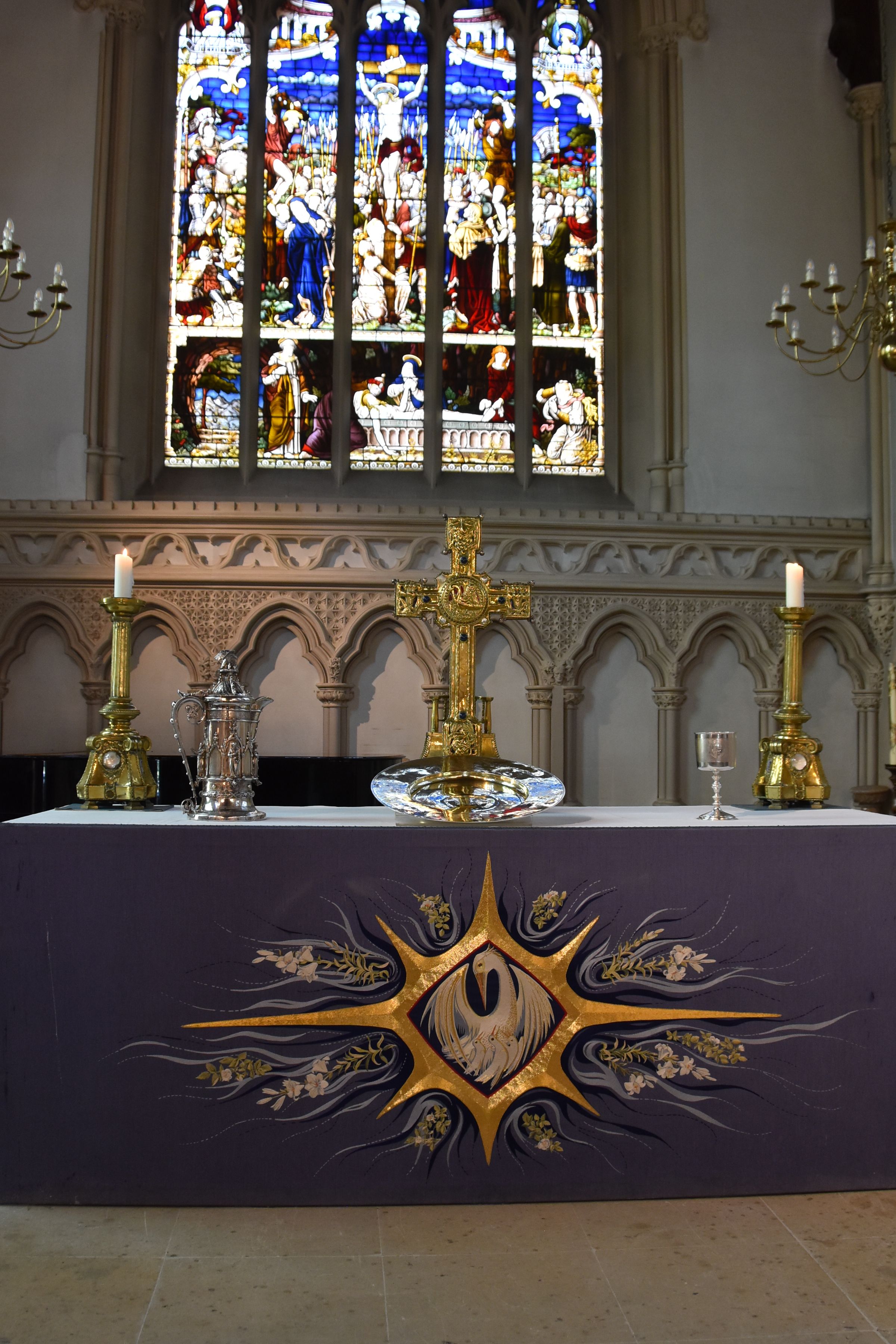Corpus Christi Day 2025
A day of celebration.

The College Name Day
The Feast of Corpus Christi was proposed by St Thomas Aquinas to Pope Urban IV to celebrate the gift of the Eucharist: Christ's Body and Blood given as sacramental food. It was instituted in 1264. Since the foundation of the College in 1352 Corpus Christi Day has been the most important day in the College year. This year it took place on Thursday 19 June.
The College is named for the two medieval Gilds that founded it as a means of rebuilding society after the Black Death. One was the Gild of Corpus Christi, dedicated to promoting devotion to the Eucharistic meal, and the other was devoted to veneration of the Blessed Virgin Mary.
The day begins with a service in Chapel at 08.30 (Book of Common Prayer Holy Communion), followed by the Chapel Choir singing in New Court.
In the afternoon, visitors are invited to view a selection of manuscripts in the Parker Library. Items of the College silver are also on display in the Wilkins Room.
In the early evening, Professor Ewan St. John Smith leads a tour of the Corpus Chronophage. Ewan is the Custodian of the Chronophage, which was created by Corpus alumnus and benefactor, Dr John C Taylor OBE.
The day begins with The Chapel Choir singing motets in New Court (click to play).
Professor Philippa Hoskin, Director of the Parker Library, chatting with guests.
Professor Philippa Hoskin, Director of the Parker Library, chatting with guests.
Ewan St. John Smith sharing secrets of the Chronophage Clock with visitors.
Ewan St. John Smith sharing secrets of the Chronophage Clock with visitors.
Choral Evensong
A few special items were on display in the Chapel for Choral Evensong on Corpus Christi Day. On the altar were three treasures of the Chapel plate: the Hankinson-Jennings flagon, the Montacute Alms-Dish, and the Perowne Standing Cup. On a lectern in front was Matthew Parker’s own Psalter.
The flagon is a ‘modern’ piece dating to 1860, inscribed with the name Thomas Edwards Hankinson (m.1824), given by Harnett Ellison Jennings (m.1868), who was Chapel Clerk (1870-71).
The Alms dish is silver-gilt and dates to 1663. It was the sole survivor of a theft from the Chapel that took place in 1693. Oliver Rackham describes the The Montactues as being “among the ten few learned members of the upper class”. The Earl of Montacute had been Chancellor of the University and four Montacute sons attended Corpus, one of whom became a Fellow. The donor’s shield-of-arms and the College arms are inscribed on the rim of the plate.
Finally, the Stewart Henry Perowne Standing Cup, dating to 1887, given by Perowne (m.1920) who was a diplomat, explorer and archaeologist. On it is inscribed Cor Cordium Cantabrigiensium A.S. MCMXLVI Sempiterna Honoret Pietas (May everlasting veneration honour…the heart of hearts of Cambridge men).
The psalter belonged to Matthew Parker, Master, Archbishop of Canterbury, and benefactor of the Parker Library. This was his own work, The Whole Psalter Translated into English Metre, which Contayneth an Hundred and Fifty Psalms (1567, John Daye, London). Nine of these Psalms were contributed by composer Thomas Tallis. The page is opened to the notation of the Psalm 67 on the left, which was sung by the Chapel Choir.
The Reception
Guests gathered in New Court for a drinks reception. We were especially pleased to welcome Guild Fellows Ms Sarah Colclough, Neil Westreich, and Dr Laura Young MBE, as well as Honorary Fellows Sir Andy Hopper, Lord Hodge, Professor Karol Sikora and Mr Stuart Laing, former Master. The choir sang once more.
The Feast
Prepared by Head Chef Ilias Arsenis, the Corpus Feast is split into two parts separated by an Intermezzo, during which the serving staff must redo the table settings. The choreography is impressive.















